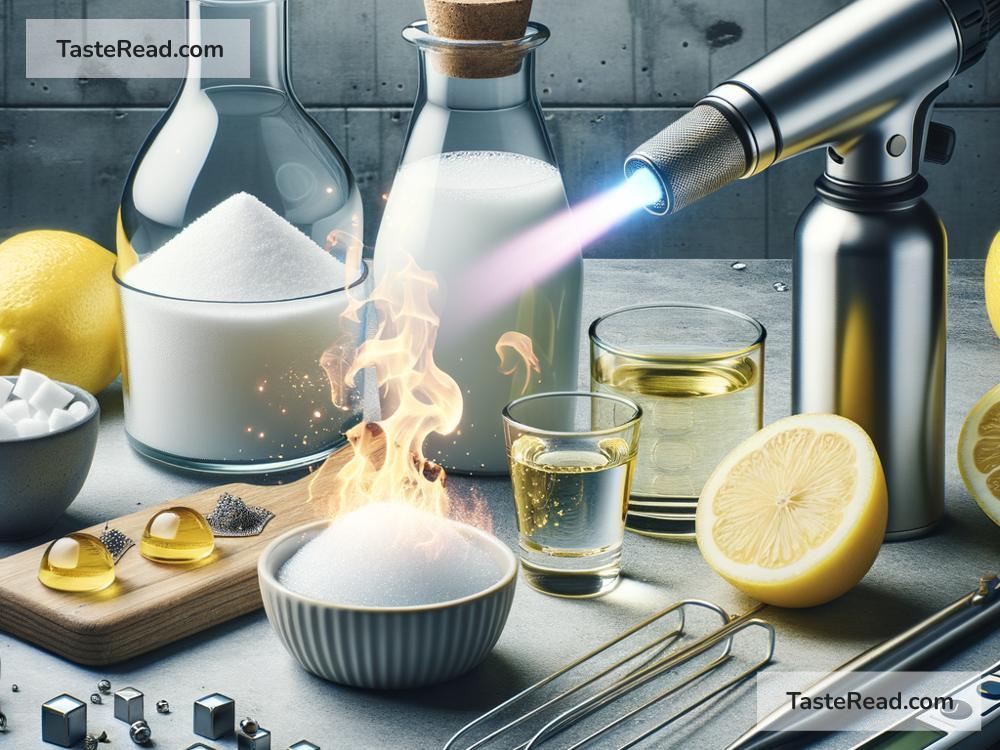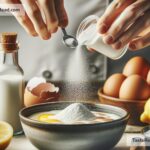The Science of Cooking with Chemical Quickness: Techniques and Tips
Cooking is much more than just combining ingredients and applying heat. Behind the scenes, there’s an entire world of science making delicious reactions happen in your pot, pan, and oven. When we speed up these chemical processes, we can save time and create meals faster without sacrificing flavor. Let’s explore the fascinating science of cooking with chemical quickness and learn some practical techniques to make our cooking more efficient.
What Is Chemical Quickness in Cooking?
Chemical quickness refers to speeding up the chemical processes behind cooking, such as breaking down proteins, caramelizing sugars, or thickening sauces. Every bite we enjoy is the result of complex reactions—like the Maillard reaction (browning proteins and sugars) or starch gelatinization (turning starch into a thickener). By understanding controls like heat, acidity, fats, and more, we can learn to cook smarter and faster.
Why Does Cooking Rely on Chemistry?
Cooking is all about change. Raw ingredients are transformed into flavorful, edible meals thanks to chemistry. Heat breaks down tough proteins and softens vegetables. Acidity can marinate and tenderize meats. Sugars caramelize to create rich, golden crusts. These reactions rely on temperature, timing, and interactions between ingredients.
When we speed up these reactions, it allows us to cook meals quicker—whether that means boiling potatoes faster, getting that perfect sear on a steak, or whipping up fluffy pancakes in minutes.
Techniques to Speed Up Cooking with Chemistry
Here are some tips and tools to incorporate chemical quickness into your cooking:
1. Heat Is Your Best Friend
One of the easiest ways to speed up cooking is to control heat. Higher temperatures trigger chemical reactions faster. For instance, boiling water at 100°C (212°F) cooks pasta quickly because heat breaks down starch molecules. When sautéing or frying, higher heat speeds up the Maillard reaction, creating rich browning and flavor.
Tip: Use a lid when boiling or simmering to trap heat and cook food faster.
2. Cut It Smaller
Smaller pieces cook faster because they have more surface area exposed to heat. Whether it’s chopping vegetables or cutting meat into thin slices, smaller portions allow heat and chemical reactions to penetrate more quickly.
Tip: For faster cooking, dice onions or garlic finely so their flavors release quickly in the pan.
3. Marinate with Acid
Acidic ingredients like lemon juice, vinegar, or yogurt can break down proteins and tenderize meat before cooking. This speeds up the cooking process because the tenderization is already started. This is why marinated meats often cook faster and taste extra juicy.
Tip: Add a dash of acid when preparing marinades to enhance both speed and flavor.
4. Steam for Speed
Steaming is a fast and efficient way to cook vegetables, proteins, and even desserts. Steam carries heat rapidly, helping vegetables retain their nutrients while cooking quickly. Plus, steaming minimizes risk of drying out food.
Tip: When steaming, cut vegetables evenly so they cook uniformly.
5. Preheat for Efficiency
Preheating ovens, pans, or grills ensures that your food starts cooking the moment it touches the surface. Cold pans or ovens can slow chemical reactions, leading to uneven cooking.
Tip: Always preheat your cookware, especially when baking bread, frying, or grilling.
6. Use Baking Soda and Salt
Baking soda (an alkaline substance) and salt can be kitchen chemistry hacks. Adding baking soda to boiling water for cooking vegetables softens them more quickly. Similarly, sprinkling salt on meats draws out moisture and helps them cook faster and more evenly.
Tip: When cooking beans, a pinch of baking soda can reduce cooking time significantly.
Tools for Faster Cooking
Combining science with the right kitchen tools can transform your cooking process:
- Pressure Cooker: Pressure cookers work by increasing pressure, which raises the boiling point of water and speeds up cooking chemical reactions.
- Microwave: Microwaves cook food quickly by exciting water molecules and generating heat.
- Immersion Blender: Instead of waiting for soups or sauces to thicken naturally, an immersion blender speeds up the process by breaking ingredients down instantly.
The Role of Ingredients in Faster Cooking
Choosing the right ingredients can also make cooking faster and easier. For example:
– Fresh pasta vs. Dried pasta: Fresh pasta cooks in just a couple minutes compared to dried pasta.
– Lean meats: Lean cuts like chicken breast cook faster than tougher, fatty cuts like beef brisket.
You can also opt for pre-sliced vegetables or pre-cooked grains for ultra-speedy meal prep.
Enjoying the Results of Quick Cooking
When cooking fast, it’s important not to compromise on flavor, texture, or quality. Be mindful of balancing speed with attention. Sometimes faster isn’t always better—but using chemical quickness wisely can allow us to prepare balanced, flavorful meals in no time.
Final Thoughts
The science of cooking is like a magic trick happening right in your kitchen. Understanding how to harness chemical quickness can save you time, elevate flavors, and turn your everyday meals into masterpieces. From using high heat and marinades to leveraging tools like pressure cookers, these techniques let you cook smarter, not harder.
Next time you’re in the kitchen, take a moment to appreciate the chemistry making your food taste great—and then put these tips to the test for faster, delicious cooking. Happy experimenting!

